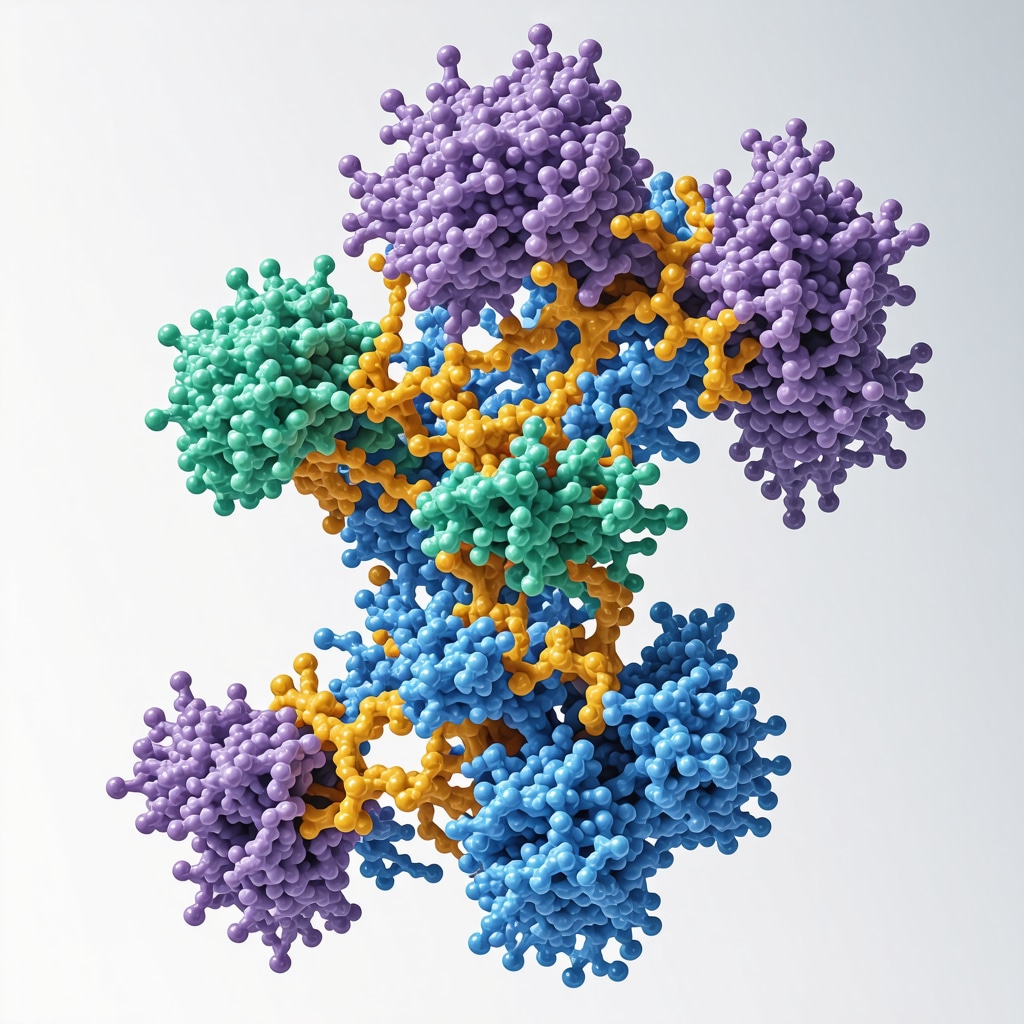Unlocking the Next Generation of GLP-1 Receptor Agonists: An Expert Deep Dive
The advent of Semaglutide and Tirzepatide signifies a paradigm shift in the management of obesity and metabolic disorders. These potent agents have redefined the therapeutic landscape, leveraging advances in peptide engineering and receptor specificity to enhance efficacy and safety profiles. As specialists in endocrinology and pharmacotherapy observe, these medications do not merely offer incremental benefits but fundamentally alter the approach to weight management, emphasizing personalized medicine and multi-targeted strategies.
Mechanistic Insights: Beyond Conventional GLP-1 Pathways
Semaglutide, a GLP-1 analog, and Tirzepatide, a dual GIP/GLP-1 receptor agonist, exemplify the sophisticated manipulation of incretin pathways. Their pharmacodynamics involve complex receptor interactions that modulate appetite, insulin secretion, and gastric emptying. Importantly, Tirzepatide’s dual activity addresses the limitations of traditional GLP-1 therapies, providing a more comprehensive metabolic regulation, which is supported by recent clinical trials demonstrating superior weight loss outcomes compared to earlier agents.
Clinical Efficacy and Safety: The Data-Driven Perspective
Recent peer-reviewed studies indicate that Tirzepatide can induce up to 15-20% body weight reduction in obese patients, with a favorable safety profile primarily characterized by gastrointestinal tolerability. Meanwhile, Semaglutide’s weekly injections have shown sustained weight loss benefits across diverse populations. These findings suggest a shift towards treatments that are not only effective but also compatible with long-term adherence—an essential factor in chronic disease management. For detailed comparative insights, consult the comprehensive analysis at this resource.
How do these advancements impact the personalization of obesity treatment plans?
As the field evolves, clinicians are increasingly considering genetic, behavioral, and metabolic factors to tailor interventions. The dual receptor activity of Tirzepatide, for instance, allows for customization based on patient response profiles, optimizing outcomes while minimizing adverse effects. This precision medicine approach is further supported by emerging biomarkers that predict treatment responsiveness, heralding a new era in weight management.
For healthcare professionals seeking to integrate these innovations into practice, exploring resources such as doctor-led fat loss plans can offer valuable guidance. Additionally, engaging with ongoing research and clinical data ensures informed decision-making in this rapidly advancing domain.
Expert insights emphasize the importance of understanding the nuanced pharmacology and patient-specific factors influencing therapy success. As the regulatory landscape adapts to these novel agents, staying abreast of the latest approvals and guidelines is crucial for optimal care delivery.
Integrating Genetic and Metabolic Markers for Tailored Obesity Treatments
As the landscape of pharmacotherapy advances, a pivotal question emerges: How can we leverage genetic and metabolic profiling to customize GLP-1 receptor agonist therapies effectively? This approach signifies a shift from a one-size-fits-all model to precision medicine, wherein individual genetic variations, such as polymorphisms in incretin receptor genes, influence drug responsiveness. By integrating comprehensive biomarker panels and advanced diagnostics, clinicians can predict which patients will benefit most from agents like Semaglutide or Tirzepatide, reducing trial-and-error and enhancing outcomes.
The Role of Behavioral and Environmental Factors in Treatment Optimization
Beyond biological markers, lifestyle and environmental influences play critical roles in treatment success. An expert framework now emphasizes the importance of behavioral interventions aligned with pharmacotherapy. For example, patients with high stress levels or irregular eating patterns may require tailored counseling alongside medication. Digital health tools and telemedicine platforms facilitate this integrated approach, providing real-time feedback and support, which are increasingly supported by authoritative sources such as the National Institute of Diabetes and Digestive and Kidney Diseases.
How might emerging technologies, like AI-driven predictive models, revolutionize the personalization of weight loss medications?
Artificial intelligence and machine learning are poised to transform obesity management by analyzing vast datasets—encompassing genetics, metabolic profiles, behavioral data, and clinical history—to generate individualized treatment plans. These models can identify subtle patterns and predict patient responses with unprecedented accuracy, leading to more effective and safer interventions. Implementing such innovations requires rigorous validation but holds the promise of truly personalized medicine. For further insights into this evolving field, explore resources like doctor-led fat loss plans that incorporate cutting-edge diagnostics.
Engaging with ongoing research and adopting a multidisciplinary approach ensures that practitioners stay at the forefront of this revolution, ultimately delivering tailored, effective, and sustainable weight management solutions for diverse patient populations.
Harnessing the Power of Pharmacogenomics to Optimize GLP-1 Receptor Agonist Treatment
In the realm of obesity pharmacotherapy, pharmacogenomics emerges as a transformative tool, enabling clinicians to tailor treatments based on individual genetic profiles. Variations in genes encoding incretin receptors, such as GIPR and GLP1R, influence drug efficacy and tolerability. Recent studies, like those published in Nature Medicine (2022), demonstrate how specific polymorphisms correlate with differential responses to agents like Semaglutide and Tirzepatide, paving the way for precision medicine in metabolic disorders.
What are the implications of genetic variability on the future of incretin-based therapies?
Understanding genetic variability allows for stratified treatment approaches, reducing trial-and-error prescribing and enhancing response rates. By integrating genomic data into clinical decision-making, personalized dosing regimens can be developed, minimizing adverse effects while maximizing therapeutic benefits. This approach aligns with the broader shift towards individualized care, supported by advancements in rapid genetic testing and bioinformatics.
Innovative Biomarker Panels for Predicting Treatment Response
Beyond genetics, emerging biomarker panels—including circulating microRNAs, metabolomic profiles, and epigenetic markers—offer predictive insights into patient responsiveness. For example, elevated levels of certain microRNAs associated with insulin resistance may predict suboptimal response to GLP-1 receptor agonists, prompting alternative strategies. Incorporating these biomarkers into routine diagnostics can refine patient selection and optimize outcomes, as detailed in recent publications by the PLOS ONE.
The Role of Advanced Diagnostic Technologies in Personalization
Cutting-edge imaging modalities, such as PET scans with specific radiotracers, enable visualization of incretin receptor distribution and activity in vivo. These technologies can identify patients with receptor polymorphisms or altered receptor density, informing the choice and dosage of GLP-1 based therapies. Integrating such diagnostics into clinical workflows requires collaboration between multidisciplinary teams and investment in specialized equipment, but the potential for truly personalized interventions is substantial.

Enhanced diagnostic imaging of incretin receptor activity in metabolic tissues.
Synergizing Behavioral Data with Pharmacogenomics for Holistic Treatment
In the quest for optimal obesity management, combining genetic and behavioral data offers a comprehensive perspective. Mobile health applications and wearable devices gather real-time information on dietary habits, physical activity, and stress levels, which can be integrated with genetic insights to craft individualized treatment plans. This synergy facilitates dynamic adjustments to therapy, improving adherence and long-term success.
How can machine learning algorithms enhance the integration of multi-dimensional data for personalized treatment?
Machine learning models excel at analyzing complex, high-dimensional datasets, identifying subtle patterns that may elude traditional statistical methods. When applied to genetic, biomarker, behavioral, and clinical data, these algorithms can predict treatment responses with high accuracy, enabling clinicians to customize interventions proactively. Ongoing research in this area, such as the development of AI-driven decision support tools, promises to revolutionize obesity therapy by delivering truly individualized care.
Engaging with these innovative approaches requires continuous education and collaboration among endocrinologists, geneticists, data scientists, and behavioral specialists. For practitioners eager to implement these strategies, resources like the latest scientific reviews and specialized training programs can provide valuable guidance. As the frontier of personalized medicine expands, embracing these technologies will be essential to delivering optimal, patient-centered weight management solutions.
Unlocking the Potential of Next-Generation GLP-1 Therapies Through Molecular Engineering
Recent advances in peptide synthesis and receptor targeting have paved the way for highly selective GLP-1 receptor agonists that exhibit improved pharmacokinetics and reduced adverse effects. Molecular engineering techniques, such as PEGylation and backbone modifications, have enhanced drug stability and receptor affinity, leading to longer-lasting effects and higher patient adherence. For instance, novel formulations like oral Semaglutide leverage transporter-mediated absorption pathways, representing a significant leap in drug delivery technology.
Emerging Role of Receptor Conformational Dynamics in Therapeutic Efficacy
Understanding the conformational states of GLP-1 receptors is crucial for designing more effective agonists. Advanced biophysical techniques, including cryo-electron microscopy and molecular dynamics simulations, reveal how ligand binding induces specific receptor conformations that dictate downstream signaling bias. Exploiting these insights allows for the development of biased agonists that preferentially activate beneficial signaling pathways, minimizing side effects such as nausea or hypoglycemia.
How can receptor conformational studies inform the design of next-gen incretin mimetics?
Receptor conformational studies enable structure-based drug design, facilitating the creation of ligands that stabilize desired receptor states. This precision approach enhances therapeutic efficacy and safety, aligning with the goals of personalized medicine. High-resolution structural data from repositories such as the Protein Data Bank (PDB) provide invaluable templates for rational drug design, as highlighted by recent publications in Nature Chemical Biology.
Integrating Systems Biology for Holistic Obesity Management
Systems biology approaches, combining genomics, transcriptomics, and metabolomics, are revolutionizing our understanding of the complex networks underlying obesity and metabolic diseases. By modeling interactions between hormones, neural circuits, and microbiota, researchers can identify novel targets and optimize multi-modal interventions, including pharmacotherapy, dietary modifications, and behavioral therapy. This integrative perspective is essential for addressing the heterogeneity of obesity phenotypes.
Leveraging Microbiome Modulation to Enhance GLP-1 Therapy Outcomes
The gut microbiome profoundly influences incretin secretion and receptor sensitivity. Emerging evidence suggests that specific microbial metabolites, such as short-chain fatty acids, can upregulate endogenous GLP-1 production, synergizing with pharmacological agents. Fecal microbiota transplantation and targeted probiotics are being explored as adjuncts to improve response rates and sustain weight loss. Understanding microbiome-drug interactions is a frontier in personalized obesity treatment.

Diagram illustrating microbiome-driven modulation of incretin pathways.
Future of Digital Health Integration in Personalized Obesity Care
Digital health platforms utilizing artificial intelligence and machine learning are poised to transform obesity management. By continuously analyzing data from wearable devices, dietary logs, and genetic profiles, these systems can generate dynamic, individualized treatment plans. Real-time feedback and adaptive interventions enhance engagement and adherence, ultimately improving long-term outcomes. Collaborations between technologists and clinicians are vital to develop validated tools that adhere to data privacy and efficacy standards.
What are the ethical considerations in deploying AI-driven personalized obesity therapies?
Implementing AI in healthcare raises concerns about data privacy, algorithmic bias, and equitable access. Ensuring transparency, obtaining informed consent, and maintaining rigorous validation are paramount. Stakeholder engagement and regulatory oversight are essential to leverage AI’s full potential responsibly, as discussed in recent guidelines by the FDA.
Stay at the forefront of these innovations by engaging with multidisciplinary research and continuously updating your clinical toolkit. Embracing these cutting-edge strategies will empower practitioners to deliver truly personalized, effective, and sustainable obesity care.
Expert Insights & Advanced Considerations
Personalized Medicine and Pharmacogenomics
Harnessing genetic profiling to tailor GLP-1 therapies enhances response rates and minimizes adverse effects, exemplifying the future of precision endocrinology.
Receptor Conformational Dynamics
Understanding receptor states through cryo-EM and molecular dynamics informs the design of biased agonists, improving efficacy and reducing side effects.
Microbiome Modulation
Targeting gut microbiota with probiotics or FMT can synergize with GLP-1 therapies, opening new avenues for holistic obesity management.
Digital and AI Integration
AI-driven predictive models analyze multi-omics and behavioral data, enabling truly personalized treatment plans and proactive adjustments.
Systems Biology Approaches
Integrating genomics, transcriptomics, and metabolomics offers comprehensive insights into obesity heterogeneity, guiding multi-modal interventions.
Curated Expert Resources
- Nature Medicine (2022): Groundbreaking studies on pharmacogenomics of incretin therapies, essential for understanding genetic influences on drug response.
- Cell Metabolism: Reviews on receptor conformational states and biased agonism, critical for next-generation drug design.
- Gut Microbiota and Obesity: Recent publications exploring microbiome modulation as adjunct therapy, valuable for integrative treatment strategies.
- AI in Healthcare: Guidelines and reviews on AI applications in personalized medicine, vital for leveraging predictive analytics effectively.
- Systems Biology in Endocrinology: Comprehensive texts on multi-omics integration, expanding the understanding of complex metabolic networks.
Final Expert Perspective
In the rapidly evolving landscape of GLP-1 receptor agonist therapies, integrating advanced insights such as pharmacogenomics, receptor dynamics, microbiome interactions, and AI-driven personalization is paramount. These strategies not only refine treatment efficacy but also embody the future of individualized obesity management. For clinicians committed to excellence, engaging deeply with these cutting-edge resources and continually refining your approach will ensure you remain at the forefront of this transformative field. Explore more at this detailed comparison and consider adopting a multidisciplinary, tech-enabled perspective to maximize patient outcomes.

This article brilliantly highlights the transformative potential of combining pharmacogenomics and advanced diagnostics to personalize obesity treatments with agents like Semaglutide and Tirzepatide. As someone who works directly with patients trying to navigate the complexities of weight management, I find that understanding genetic and metabolic profiles can truly make a difference in improving response rates and reducing trial-and-error. I’ve seen cases where tailored approaches based on genetic testing led to significant improvements in adherence and outcomes.
One challenge I often encounter relates to integrating these sophisticated diagnostics into everyday practice—especially in clinics with limited resources. Do any of you have experience implementing pharmacogenomic testing or advanced biomarker panels cost-effectively? I’m curious about practical strategies or emerging technologies that could make these approaches more accessible for a broader patient population. It’s an exciting frontier, and I believe collaborative efforts can help bridge the gap between research and clinical application.